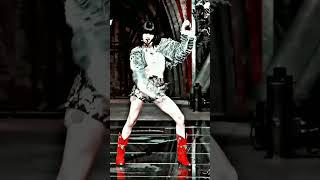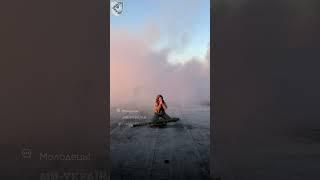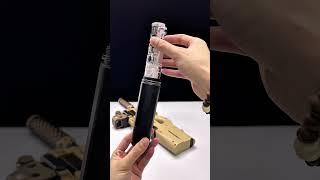
3 Oil Painting Mediums and How to Use Them
Комментарии:

Thank you ma'am
Ответить
thanks,very informative
Ответить
For last detailing can we mix turpentine for outlines etc.
Ответить
How to wash oil paint brushes
Ответить
After toning my canvas and creating grisaille with turpentine medium, can I just simply mix turpentine with linseed oil if I didn't have Liquin available before finishing the painting using pure linseed oil and pigments?
Ответить
thanks i use oil paints for the colors on mandolins
Ответить
Can we use ... Kerosene oil as medium?
Ответить
3 years watching
Ответить
with the fat over lean rule, where would the paint from tube stands between these 3 medium?
Ответить
hello there thanks for the video , the questions can you mix every thing together?
Ответить
Great explanation!
Ответить
You shouldn't wash your brushes with Terpentine. You need odorless White Spirit for that. I am not sure if this what you got there is even true Terpentine, maybe it is White Spirit labelled as Terpentine. True odorless Terpentine is much expensive for cleaning your brushes with.
The main difference between the two is that the true Terpentine will somewhat protect the natural oily bounds in thin washes (and it is made from pine trees) while White Spirit is petroleum product and can result in not allowing the formation of natural strong bond with the canvas/oil layers.

Liquin is so toxic. 😵💫
Ответить
Thank you, it helped a lot since I'm a beginner at oil painting, I do have one question though, is turpentine the only thing that can be used to clean the brushes or have you tried an alternative?
Ответить
I am wanting to mix up a dark coffee colored wood stain from several oil paint tubes. What medium is best to make a wood stain? Thank you
Ответить
very informative. I appreciate this video a lot...
Ответить
Thanks so much for that explanation! 😊
Ответить
YOU DON'T KNOW WHAT YOUR TALKING ABOUT !!!
Ответить
This is super helpful. Thank you.👍
Ответить
Why would one need to use linseed oil on top of using Liquin?
Ответить
Hi, I’m pairing a big flag 10x12 but since I will be waving it I need it to be light. What do you recommend I use to make my paint not so heavy and so that the paint doesn’t end up cracking ? Thank you
Ответить
is the liquin the same as (edit) the stuff I have for acrylic?
Ответить
Really great explained 🙏🏼 Thank you!
Ответить
Is oderless Turpenoid substitute the same as genuine turpentime ?
Ответить
I would not use Liquin like this. It's normally used in small amounts to make the paint dry faster (you don't need much of it). You can thin the paint a bit with it…but the paint sort of curdles a bit when you first start to mix it. It's also possible to dilute it with turps to make a medium. You can also mix turps and oil to make a medium. But beware…if you don’t clean your brush Liquin sets hard and will ruin that brush. Some paints, like Winsor and Newton Alkyd are fast drying anyway ..they have a drying agent (like liquin) already added.
Ответить
I try to paint with linseed oil only (and calcite). Not solvents or alkyds or any sort. Thabks for sharing!
Ответить
An excellent demo! Brava!! A very good medium is 1 part linseed oil, 2 parts Liquin and 3 parts mineral spirits. With Liquin, the fat-over-lean "rule" is no longer valid (the rule came about because of the extended drying times caused by linseed oil).
Ответить
That was really helpful, I'm new to artistic paint. I knew linseed but I bought a kit that came with odorless turpentine and I tough it was solvent to clean the brushes😂
Ответить
Have you used much stand oil? I've never used linseed, and wondering how they compare (smell aside 😉) Thanks
Ответить
T UUUUUUUUUUUUUUUUUUUUUUUUUUU rpentine!!!!!!!!
Ответить
Turpentine is too toxic. Mineral spirits instead.
Ответить
Oh! I forgot: "Medium" is singular, and plural is MEDIA, not "mediums". I thought you Fine Arts types had heard of Latin Grammar.
Ответить
actually for turpentine i think we need to use a diffirent turpen for safety reason even if the turpentine is odorless, i would recommend gamsol and lavender spike
Ответить
Beginner gonna stuck with smell
Ответить
Gamsol 100% pure odorless thinner is the way to go turpentine has many risks and dangers . Linseed oil and liquin original is all U need
Ответить
Do you have to thin your oil paint or you can just use it the way it comes?
Ответить
If a little turpentine is mixed with linseed oil in the first coat, what will be the result?
Ответить
Thank you
Ответить
Wilson Lisa Lopez Cynthia Allen Mary
Ответить
With the liquid, you have not mentioned the twenty five percent restriction. Artists are instructed by the company to never use more than one part liquid to three parts paint.
Ответить
Love your demo. You explained it all very well & the visuals are great. I got exactly what I needed to see & learn from your post. One thing is that darn linseed oil tho. As you mentioned- "longer drying time." I used it months ago on top of my finished oil painting U& its still wet. Looks great. But I dont like using it because of this. Thank you for your video. Take care.
Ответить
Hello! I'm 16 and i have been making portraits by using pencil colours but now i want to start oil painting. Will it work if i just use turpentine and skip linseed oil and liquin ? as i don't have those and i have one question...um..if linseed oil takes a lot of time to dry then why do we use it?
Ответить
Very helpful!!! Defenitly confirmed for me that linseed oil is the best thinner for my style (and yes i agree it smells amazing)
Ответить
Harris Nancy Jackson Elizabeth Williams Barbara
Ответить
Can I mix liquin with linseed oil?
Ответить
Cadmium is one of the most toxic elements around – DO NOT TOUCH IT WHEN IT'S WET!!!!
Ответить
Thanks for the video :)! Any advice for using Liquin for glazing?
Ответить
What would you recommend for an initial underpainting for a portrait with no drawing, just by spotting the image and keeping it all in a very wet state while defining the shapes?
Ответить
Thank you
Ответить
Yet another finger pantomime video :( please don't do that
Ответить

























